THE BREWERIES
Chivington Farm Brewery. (NGR TQ 342512) Civenture, now Chivington, which has long ceased to be a separate Manor, mentioned in the Domesday Book, still retains its name in a farm of about 70 acres, lying south of the road between Bletchingley and Godstone. The derivation of the name is probably to be referred to the tribe of Cifings, from whom Chevington in Suffolk and Chevigne, Chevincourt, etc. in France are also supposed to be derived. The farm was once moated, and thus attests to its antiquity.
The earliest reference to a brewery is in the 1832 Piggotts Directory wherein one John Hall is listed as brewer at Chivington, Bletchingley. Successive Piggotts and Post Office directories continue to list John Hall until 1877, when his widow Mary Hall is given as continuing the trade. The concern appears to have been taken over by William Turner and John L. Lashmar of the Oxted Brewery circa 1887 and no further reference is made in directories following that date.
Brewhouse, Brewer Street. The only other reference to brewing in Bletchingley assosciates No 8, Brewer Street with the industry. Nos 6, 7, & 8 Brewer Street date from the 16th century.
_____________________________________________________________
Chivington Farm Brewery. (NGR TQ 342512) Civenture, now Chivington, which has long ceased to be a separate Manor, mentioned in the Domesday Book, still retains its name in a farm of about 70 acres, lying south of the road between Bletchingley and Godstone. The derivation of the name is probably to be referred to the tribe of Cifings, from whom Chevington in Suffolk and Chevigne, Chevincourt, etc. in France are also supposed to be derived. The farm was once moated, and thus attests to its antiquity.
The earliest reference to a brewery is in the 1832 Piggotts Directory wherein one John Hall is listed as brewer at Chivington, Bletchingley. Successive Piggotts and Post Office directories continue to list John Hall until 1877, when his widow Mary Hall is given as continuing the trade. The concern appears to have been taken over by William Turner and John L. Lashmar of the Oxted Brewery circa 1887 and no further reference is made in directories following that date.
Brewhouse, Brewer Street. The only other reference to brewing in Bletchingley assosciates No 8, Brewer Street with the industry. Nos 6, 7, & 8 Brewer Street date from the 16th century.
_____________________________________________________________
THE PUBLIC HOUSES ETC
Bletchingley had a phenomenal number of public houses in the 19th century and many of them started up probably circa 1840 because of the railway development. In the 1850’s they had such a bad reputation that they were forbidden to the Guards stationed at Caterham barracks.
Cottage of Content, High Street. Situated 200 yards from the White Hart Inn and 200 yards from the Plough. In 1892 it was described as a beerhouse owned by Philip Howard of Bletchingley but tied to the Hornchurch Brewery Co., of Hornchurch, Essex. The licensee was a James Adams and the beerhouse frequented by labouring classes. James Adams appears in both the 1891 and 1895 directories.
Originally, the beerhouse was owned by Youell & Elkins of horley, brewers, and fell into the hands of the Hornchurch brewery when the Horley brewery was taken over.
_________________________________________________________________
The Fox & Hounds, Union Lane. (NGR TQ 32755075) Situated 200 yards from the White Hart Inn, and 200 yards from the Plough.
In 1892 was a beerhouse owned by Nalder & Collyer of Croydon. The licensee was William Hilyer and the beerhouse was frequented by the labouring classes. William Hillyer was licensee from circa 1878 to 1895. Acquired by Nalder & Collyers in 1853 (SRO 337/1/86; SRO 337/1/79,83,85-87)
It stood at the southeast corner of the churchyard on the site now occupied by a car-port attached to No 4 The Mint. It was built on the line of the old High Street of Bletchingley that ran down Church walk and passed the churchyard wall and joined the present road at the Plough Inn (Uvedale Lambert letter 22.11.1972).
_______________________________________________________________
The Plough, High Street (NGR TQ 330508)
Situated ¼ mile from the White hart, and ½ mile from the Red Lion. 17th century restored.
In 1892 described as a public house owned by Sir Benjamin Brodie of Reigate and tied to the Star Brewery Co., Eastbourne, for trade. The licensee was Thomas Fishlock. The accommodation could cater for 8 lodgers and had stabling for 8 horses. Frequented by labouring classes. Thomas Fishlock had been licensee since about 1882, when he replaced Thomas Sargeant (listed in 1878). G.Simmonds was there in 1859.
________________________________________________________________
The Prince Albert, High Street. (NGR TQ 328507) Situated 200 yards from the White Hart and 200 yards from the Plough Inn. 16th century restored.
In 1892 described as a beerhouse, owned and tied for trade to Young & Son, Dorking. The licensee was Christopher Wren, and the beerhouse was frequented by labouring classes.
________________________________________________________________
The Red Lion, High Street. (NGR TQ 232507) Situated ¼ mile from the William IV, and 2½ miles from the Spotted cow.
Commanding the entrance to Bletchingley village, the inn can be traced back as far as 1309 when it was known as the Maid. The princely sum of 3d was spent by the churchwardens on the occasion of a visit by Queen Catherine of Aragon to Bletchingley Place “on drynke when the Queen’s Grace came to the Maid”. Two years later, in 1521, when Henry VIII came to see his new property, The Place, forfeited to him upon the execution of the Duke of Buckingham, 2d was paid for a gallon of ale to the bell ringers, “against the kinge comynge to the Maid”.
In 1892 the licensee was John Bashford. Accommodation was provided for 4 lodgers and stabling for 2 horses. The inn was frequented by tradesmen and working classes.
Mellersh & Neale owned the inn until 1938. It was seriously damaged by fire on Wednesday 15th October 1969.
________________________________________________________________
Spotted Cow, Warwick Wood (NGR TQ 31055315) Situated 2½ miles from William IV, Bletchingley, and 2½ miles from Feathers, Merstham.
It stood on the road from Pendell Camp to White Hills at Warwick Wood. Subsequently named the Warwick Arms. Pulled down to make way for the M25 (Uvedale Lambert letter 22.11.1972).
In 1892 described as a public house owned by Howard Nalder and tied to Nalder & Co of Croydon. The licensee was William packham. Accommodation was for 2 lodgers and 2 horses. Frequented by labouring classes.
________________________________________________________________
The Three Tuns, High Street (NGR TQ 326508 (?) Situated 200 yards from the White Hart Inn and 200 yards from the Plough.
In 1892 described as a beerhouse owned by Frederick E Piper, of Horley, and tied to the Hornchurch Brewery Co, Hornchurch, Essex (formerly Youell & Elkin, brewers, Horley). The licensee was William Balcombe, and the premises described as a tramps lodging house.
________________________________________________________________
White Hart, High Street. (NGR TQ 327506) Situated in the centre of Bletchingley on the south side of the High Street about 100 yards from both the Prince Albert and the Three Tuns.
Much of the fabric dates from the 16th and 17th centuries, although a sign on the front proudly boasts the date 1388. The stables at the rear are 18th century. It is said that at the time of parliamentary elections, the inn set out barrels in the street, free to all drinkers, and “Bletchingley cobbles ran with beer”.
By 1892, the inn was owned by Pagden of Epsom, brewers, and the licensee was Thomas taylor Hodgson. Accommodation was available for up to 8 lodgers and stabling for 11 horses. It was frequented by tradesmen.
_________________________________________________________________
William IV, Merstham Lane. (NGR TQ 323510) Situated ¼ mile from the Red Lion, and 2½ miles from the Spotted Cow.
In 1892 described as a public house owned by George William Bradley of Epsom and tied to Bradley & Co, brewers, Epsom. Licensee was George Zeal. The inn had accommodation for 4 lodgers and 4 horses. Frequented by the labouring classes.



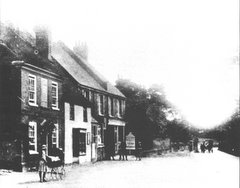
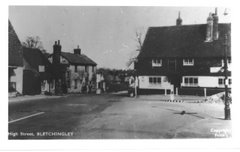
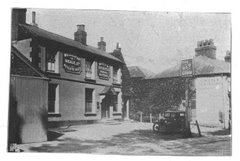


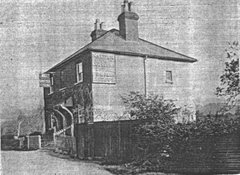
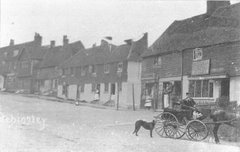
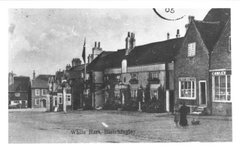
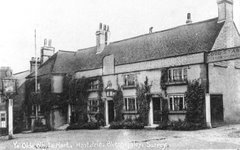
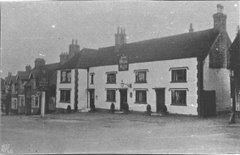
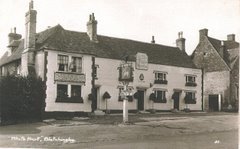


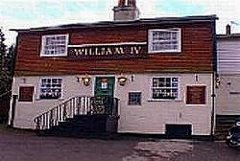

2 comments:
A great resource, which I hope the public and local history societies can contribute to, should they have other useful info and pics.
I agree very useful information
Post a Comment